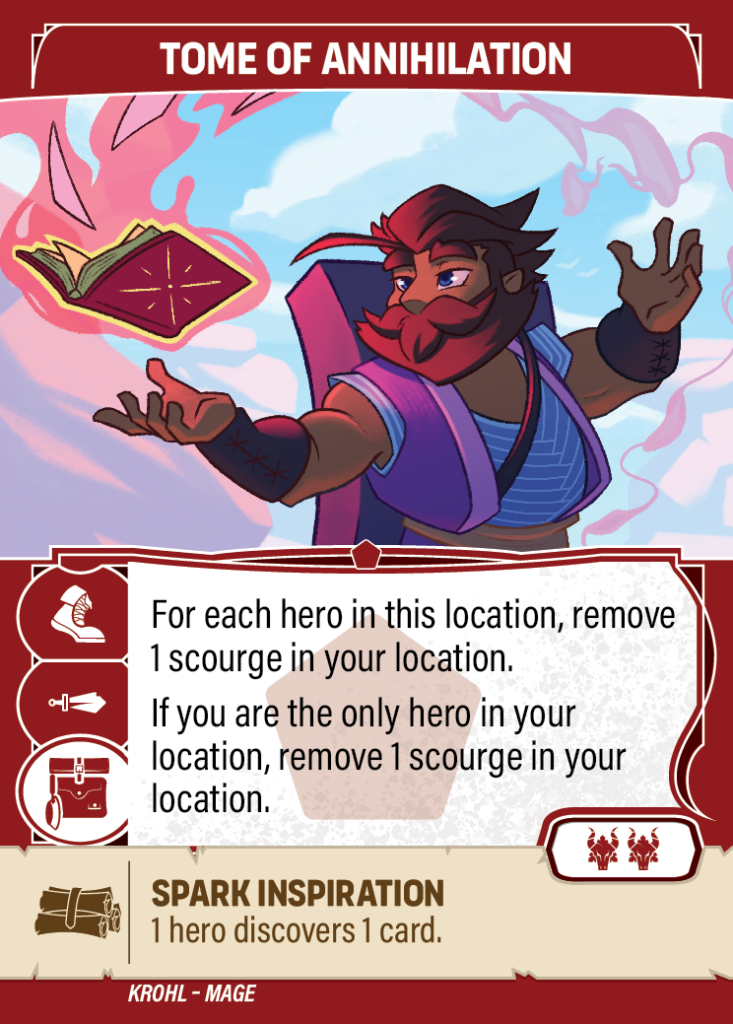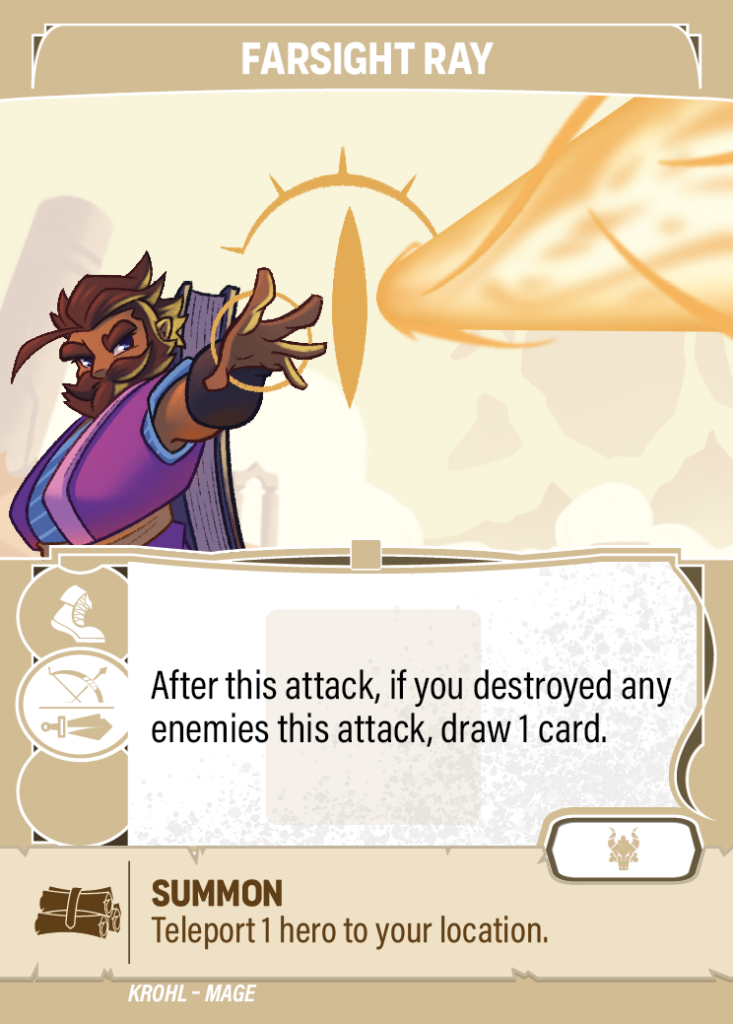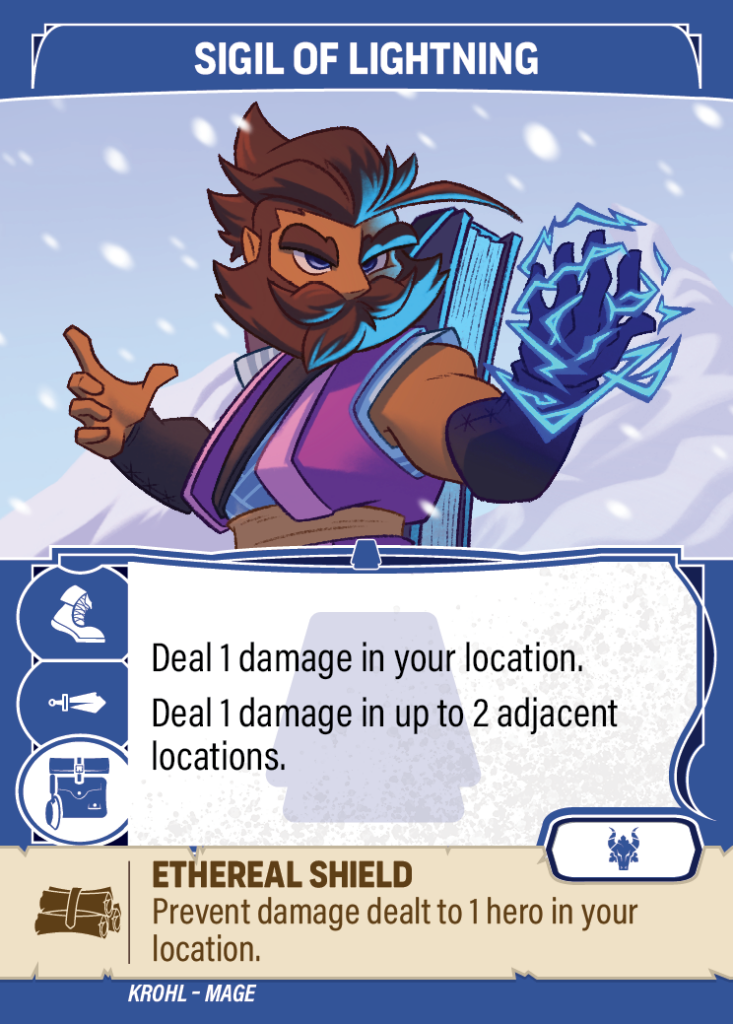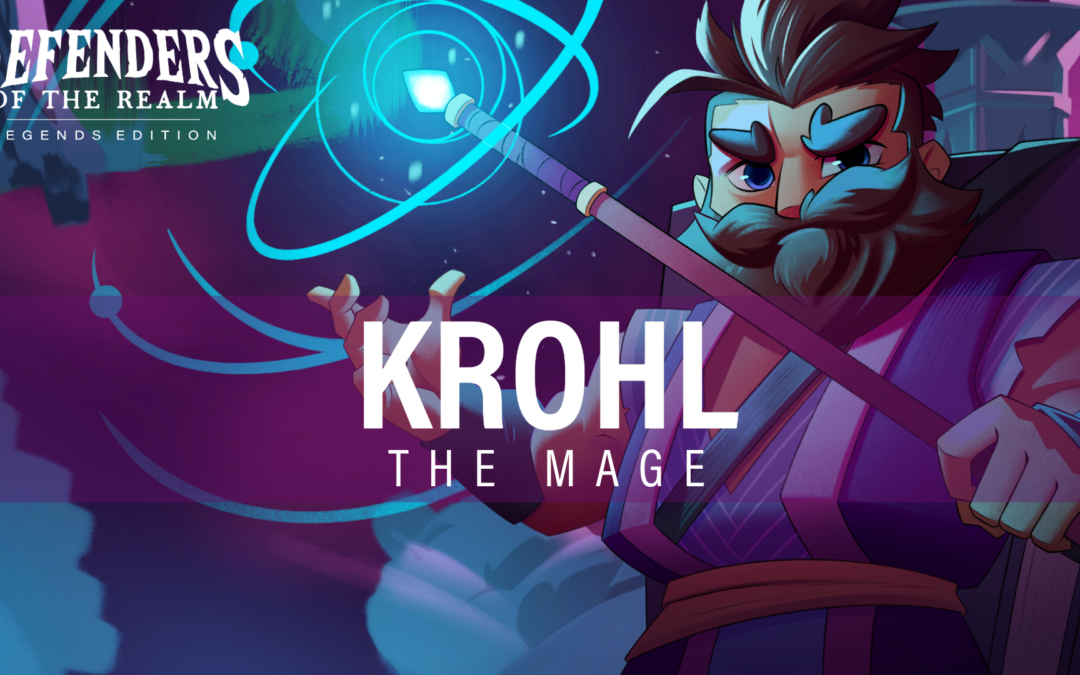Reality bends and time warps. The mysteries of the universe are revealed with enough careful study and thought. Tinkering, yes, but not the sort that you’d expect of a Dwarf! No, Krohl the Mage has always longed for more than just forging weapons and creating little wind-up toys.
Mechanics are a man-made part of a greater whole that has long since called to him. From a young age, he knew that the secrets of what made everything tick needed to be known. He had to be the one to discover it. Sense it. Understand it.
A long-tenured professor of the Magical Academies of Monarch City, he has reached the highest rank a Mage can receive and plans on only using this power and knowledge for good. His drive to help others just barely comes first to his need to show off, though. And he plans on performing every trick in the book to keep our enemies on their toes…
Let’s dive into card anatomy with Krohl the Mage. First, we’re going to show off his panel, as we do, but then we’ll get into the rules about cards and what they look like. His are a little special and showcase everything that a card has to offer.
Krohl’s Panel

Fold Space
Fold Space allows for Krohl to instantly teleport to a location that shares the same color as the card discarded. He’s a mage! Of course with careful practice, and the right spell, he can get anywhere across the map!
Scroll Scribe
When discarding a card from hand or heap, you may put that card in an unoccupied scroll space. Prepared spells in those scroll spaces can be used instantly and at any time, during any phase of play. He’s got those spells ready and he’s not afraid to use them!
Hasty Scribing
Hasty Scribing allows him to pay a coin to prepare a spell from hand. Of course, though, he’s limited in how many spells he can have at any given time, which you can see from the slots at the bottom of his panel.
Cards & Anatomy

Now, for the card itself! Each card has a title to give it that little bit of introductory flair and let you know what the card is going to do.
Underneath those, however, is the real meat and potatoes of what the card will actually do. Cards may be used for one of three things: movement, attack, or utility.
Movement
The icons for movement are as follows:
Boot: move to 1 adjacent location
Horse: Move 2 locations
This Krohl card would allow you to only move one space. As a matter of fact, all of his cards are like that! He isn’t made to be speedy, unlike other heroes. Here you can see a Samil card that allows for two movement.

There are more, but you’ll have to stick around to find out about those heroes!
Attack
Attacks can be handled one of two ways:
Sword: Attack in the location you’re currently in.
Bow: Attack in an adjacent location.

Some have both and can be used for either attack!
Utility
And finally for the icons we have:
Utility! These are cards that can be used for something other than attack and have unique effects based on the text they display.

They’re usually straightforward about what they do and how to utilize them.
Any card may be used for any of the above, but you only gain the benefits of the written text if using them for that specific action. For example, you can use a utility card to move, but you don’t gain the benefit of the utility if used for a movement.
Spells
Most certainly not least, we have something unique to mages and thaumaturges: spells.
Spells are denoted at the bottom of the card and list their effect. In Krohl’s case, the spells may be used at any time, no matter the Dawn/Day/Dusk/Dark phase. The only limit is how many spells you can hold at one time and when you can prepare them, but that’s what his abilities are for!
Card Color: Attacking Bosses
You’ll also note that each card has a color, for everyone. This isn’t just because of teleporting around the world. Oh no, this is also how bosses are attacked.

Each card denotes how many dice can be used against a boss of that specific color. Got a handful of red cards? Then get to Azzoz as quickly as possible to knock him down a peg or two!
It’s a lot of information to process, but once you know what the icons mean, it’s quick and easy to pick up on what each card is for! There’s also a reference card in the game until you’ve memorized the icons.
Being a Mage is likely the biggest support of the core heroes, so communication with your team is absolutely necessary as to not only what you can do in the moment, but what your spells can do for you later! You’ll be able to help your fellow heroes travel across the land much easier as well as all sorts of other fun things.
Alright! Another round of information overload. It gets easier from here on out! Now that you know how the basics of the heroes work, the rest is just navigating the uniqueness of each minion and boss. Easy to understand, but difficult to master. Tune in next time where we’ll talk about our mob boss Gri the Goblin King!

